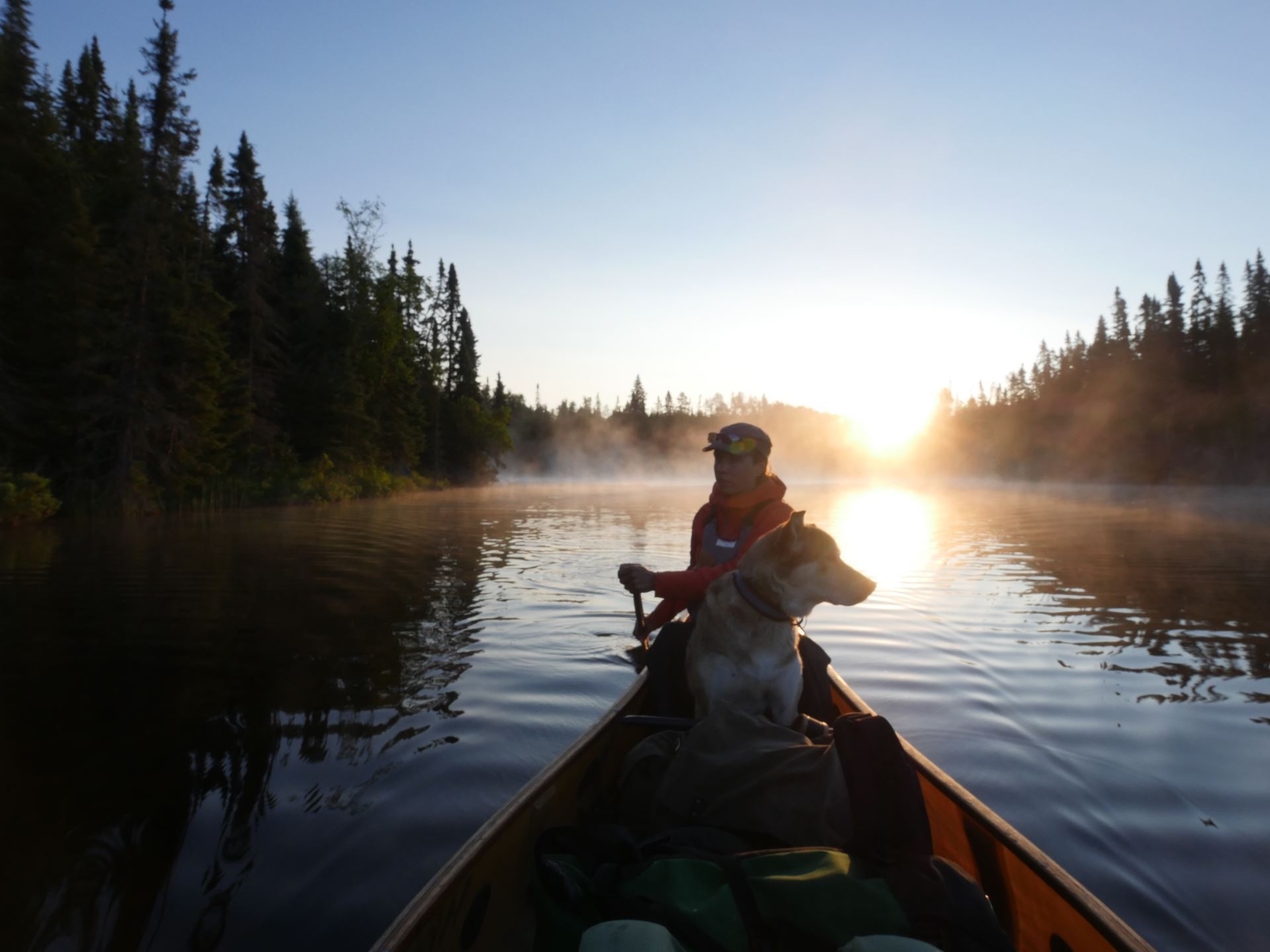By Louise Segreto
Looking across Burntside Lake from Sigurd Olson’s weathered wood cabin at “Listening Point”, located just outside of Ely, I think about the fate of the Boundary Waters Canoe Area Wilderness (BWCAW) in light of northern Minnesota’s most recent threat: Copper-Sulfide Ore Mining. What would Sig Olson say about opening the door to copper-sulfide mining? No doubt, he would vehemently oppose it, and work tirelessly to educate us about why copper-sulfide mining would be a catastrophic mistake, not only for the Boundary Waters, but for all of Minnesota.
Advocacy work to protect the Boundary Waters has been a long road of hard-fought successive battles. The first fight, undertaken by the newly formed Izaak Walton League (“IWL”) in the 1920s, was to halt the construction of roads through the area. Since then, the IWL, joined by many others, have continued for almost 100 years to fight for protections against: logging, damming, air traffic, private property ownership, cell tower construction, snowmobiling and motorboating. The IWL has always been at the head of the charge to protect the Boundary Waters. Herculean efforts of IWL leaders such as Bud Heinselman, Raymond Haik, Wes Libbey and Dave Zentner, to name just a few, are legendary. Finally, in 1978- success! The Boundary Waters was declared a Wilderness Area under the federal Wilderness Act.
But, despite the Boundary Waters being a federally protected Wilderness Area, this alone is not enough to put an immediate halt to the newest threat of copper-sulfide mining. What makes this threat more difficult to fend off, is that both proposed mine locations lie outside of the boundaries of the designated BWCAW. The Twin Metals site is in the Rainy River Watershed, a sub-watershed of the greater Boundary Waters’ Watershed; and the Poly Met site is located just south of Babbitt in the St. Louis River Watershed which flows ultimately into Lake Superior.
Geographical arguments aside, both proposed mining operations nevertheless pose a serious threat to the clean waters of Minnesota. So, why are we opening the door to copper-sulfide mining? Copper-sulfide mines are not like iron ore mining. Vast piles of waste rock are produced in copper-sulfide mining, because of the extremely low percentage of copper contained in the ore. When rain falls on sulfide ore waste, it produces sulfuric acid, which is the same as battery acid. Making matters worse, sulfuric acid leaches out heavy metals such as mercury, lead and arsenic. Because of the unique hydrology of the Boundary Waters, there is a high risk that contaminated water will infiltrate into its watershed and Lake Superior. Furthermore, there is the real risk of tailing wastewater ponding areas that can fail over time and contaminate lakes, rivers and groundwater. If these copper-sulfide mines are allowed to proceed, they will pave the way to other mining operations in the region. Hundreds of prospecting permits have already been filed waiting on the decisions in the Twin Metals and Poly Met cases.
Combine all of this with the fact that there has never been a copper-sulfide mine anywhere that did not pollute surrounding waters. Throw into this toxic mix that both mining operation proposals are largely owned by thinly capitalized foreign national conglomerates who cannot offer sufficient financial assurances for safeguarding the mine areas after they are pillaged and exhausted. We already know that the major owners behind both mines are notorious for their dismal track records of environmental degradation and corruption. Sig Olson would be outraged and demand answers to how these mining proposals ever got as far as they have!
The BWCAW is the most frequently visited wilderness area in the U.S. It is Minnesota’s crown jewel. All Minnesota residents have a stake in the future of the BWCA. For that matter, the Boundary Waters are public lands and belong to every Minnesotan. How we manage and protect our public lands should not be dictated by local interests. Especially in light of the fact that mining has never proven in the past to be the solution to northern Minnesota’s economic health.
The IWL and other environmental groups are fighting back. The Minnesota IWL has signed on as a Plaintiff with the Minnesota Environmental Partnership (“MEP”) to challenge the Department of Interior’s reinstatement of Twin Metals’ mineral leases. Another suit is pending in the Minnesota Court of Appeals brought by MEP and the Fond du Lac Band of Lake Superior Chippewa to reverse Poly Met Minings’ permits to mine. Until a final decision in this appeal, the DNR permits to Poly Met are temporarily on hold. Additionally, the Friends of the Boundary Waters has challenged the U.S. Dept. of Agriculture’s recent cancellation of a Forest Study that had placed a 20-year moratorium on mineral exploration in the watershed of the Superior National Forest.
As this litigation drags on, it is easy to lose track of what is going on and get confused by the technical arguments upon which these cases will pivot.
A great book which provides a detailed account of what it took to gain Wilderness status for the Boundary Waters:
“Troubled Waters-The Fight for the Boundary Waters Canoe Area Wilderness” by Kevin Proescholdt, Rip Rapson and Miron L. Heinselman, published by North Star Press of St. Cloud, Inc. (1995) 324pp
Contact your legislators and Senators Amy Klobuchar & Tina Smith, and Governor Tim Walz and let them know that you oppose copper sulfide mining in northern Minnesota and explain why.
Do your best to stay informed. For further background and updates, check out:
Friends of the Boundary Waters Wilderness @ www.friends-BWCA.org
Save the Boundary Waters @ www.savetheboundarywaters.org
Photo courtesy Dave Freeman, Save the Boundary Waters